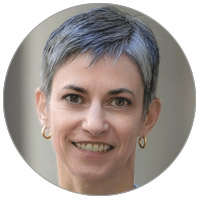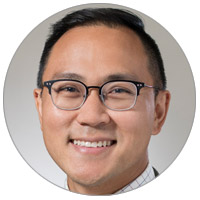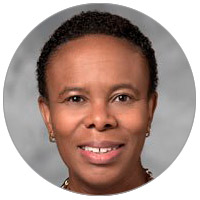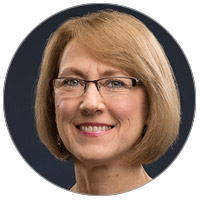News
Can COVID’s Health Reform Lessons Really be Applied in a Fee-for-Service System?
Penn Alumni Weekend Experts Panel Provides Real-World Insights from the Trenches
The big question after 15 months of frenetic COVID-driven experimentation with expanded health delivery practices like telehealth, digital health, home care, and drastically modified supply chains is this: Which will ultimately be adopted for permanent use by providers, insurers, and regulators?
That question—somewhat trickier than it may initially seem—was the subject of the University of Pennsylvania May 14 panel discussion, Health Care After the Pandemic: What Will Change? Although systems like telehealth, digital health, and clinically-oriented home health care are now widely presumed to be proven, they may face significant economic, logistical, and workforce challenges to full-scale implementation and use after the pandemic, according to the panel’s experts.
Co-sponsored by the University of Pennsylvania’s Leonard Davis Institute of Health Economics (LDI), The Wharton School, Perelman School of Medicine, School of Nursing, and Penn Alumni Relations, the event was part of Penn’s annual Alumni Weekend.

Critical gaps
“COVID-19 has demonstrated that even in a colossal industry like health care, change can come quickly when necessary,” said LDI Executive Director Rachel Werner, MD, PhD, as she opened the discussion. “Many clinicians and health policy experts are now thinking about what we learned from the pandemic and the rapid-fire innovations we have experienced, as well as the critical gaps the pandemic has exposed in our health care delivery system.”
Perhaps the most obvious gap—access to health care itself during a national emergency—occurred in the opening months of the pandemic as hospitals and other providers dramatically restricted patient entry at the same time medical facilities were shunned by droves of patients, no matter how bad their symptoms were. Suddenly, small, proof-of-concept telemedicine units in health systems were pushed out of the back room onto the front of the stage. One of those was Penn Medicine OnDemand, whose Medical Director is Krisda Chaiyachati, MD, MPH, MSHP, LDI Senior Fellow, and Assistant Professor of Medicine at the Perelman School of Medicine, and LDI Senior Fellow.
500% appointment increase
Staffed by nurse practitioners, Penn Medicine OnDemand provided 24/7 service and logged about 5,000 appointments in 2019. During the next 12 months, it experienced a 500% increase in appointments.
“When the pandemic hit, everything just blew up,” said Chaiyachati. “Our expansion not only demanded a huge amount of infrastructure, but also an equally huge amount of collaboration and innovation to manage those patients.” The unit also began tracking equity trends within its more technologically challenging service.

“One thing we quickly noticed was that Black patients in our West Philadelphia neighborhood were using telemedicine at a lower rate than our white patients,” said Chaiyachati. “But, there was an interesting change in our data for appointment ‘show rates.’ Low-income patients, particularly minority patients, traditionally have higher appointment ‘no show rates’ than other populations. But in our telemedicine system, we were seeing the highest show rates we’ve ever seen among low-income and Black patients. I believe this is because they are gaining a new access path to care. I think this tells us we have an opportunity going forward to think about the alternative ways we can provide more care to more people in ways that work better for them.”
Telemedicine business model debate
Chaiyachati characterized his last year’s overall experience as “exhausting and incredibly complicated,” as well as fulfilling. He also noted that there continues to be intense debate and uncertainty behind the scenes about how the business model of telemedicine on such a large scale would work.
“The debate is not just at the policy level,” Chaiyachati said, “but at the organizational and practice level as well. A big issue is: How should this be priced? Should we pay the same amount we do in person? Or, do we pay less? On the ground, physicians face challenges in how to operationalize daily telemedicine. How do they structure their practice so they do the in-person deployments and then churn through the right number of telemedicine appointments? What happens if they make more per hour with in-person visits than telemedicine visits?”
He also noted the issue of increased time and labor demands. “The argument from a provider standpoint,” Chaiyachati said, “is ‘I’m doing all this additional work after the telemedicine session—spending 30 minutes on top of the initial 15-20 minutes trying to help coordinate the care. But I was never getting reimbursed for those things. I was working past normal hours to 7:00 p.m. or 8:00 p.m.'”

Thinking differently
The Henry Ford Health System that operates a hospital and more than 40 medical centers across Michigan, had a similar experience with telemedicine over the last year, said panelist Carladenise Edwards, PhD, Executive Vice President and Chief Strategy Officer at the Henry Ford Health System. “The use of digital encounters and technology went up (300%) because there was no choice, and came back down to about (200%) of where we were prior to the pandemic, and that may be sustainable,” said Edwards. “It means we have to think differently about where health care is provided.”
Edwards also cautioned that “as we think about health care reform being a way to reduce cost, all of the bells and whistles (of things like telemedicine and the expansion of home care during COVID) actually increased cost. So we have to find a healthy balance in doing that.”
Similar to the rapid changes that occurred in telehealth during the pandemic, health systems executed rapid shifts to home health care, expanding the transfer of more clinical services formerly provided in hospital and nursing home settings into the home.
“Home health care really became a partner and safety valve for health systems as COVID was filling their beds and capacity limits were being reached,” said Kathryn Bowles, PhD, RN, FAAN, FACMI, Professor of Nursing at Penn’s School of Nursing, Director of Research at the Visiting Nurse Service of New York, and LDI Senior Fellow. “Home health care clinicians were taking the risk to go into patients’ homes despite the scramble to get the personal protective equipment needed to keep the staff and patients safe.”
Staffing shortages in home care
“Home health care wasn’t used at the capacity it could have been used because of nurse staffing shortage,” said Bowles. “Also, some people were fearful of allowing outsiders into their homes—there were high rates of refusal. Many people don’t understand that this is a skilled professional nurse providing services, along with social workers and physical therapists. Many people think it is a health aide who helps with cooking, cleaning, and dressing patients. More education of the public is needed going forward.”

“In terms of effectiveness,” said Bowles, “we did a study in New York City at the peak of the pandemic with 1,409 COVID survivors who came out of acute care into home health care. There was great improvement from admission to discharge in function, symptoms, and low readmission and mortality rates. So the value of home health care was definitely demonstrated.”
Bowles said she doesn’t see signs of Medicare or Medicaid plans for increased funding or support for home health care. She also described how although telehealth can play a major role through a typical episode of health home care, its use is also limited by financial restrictions.
No telehealth reimbursement
“There’s a lot of talk about telehealth within home health care, but there’s a real barrier to that because there is no reimbursement for it,” Bowles explained. “You get a lump sum of money to provide home health care. If you want to do telehealth within that amount, you’re free to do it. But there’s no reimbursement for the telehealth visit or the technology.”
All panelists concurred that a central issue making the pandemic all that much worse was the shocking lack of emergency preparedness for such a national medical emergency within both health care organizations and the government. As the COVID infection count rose rapidly into the tens of millions, hospitals across the country lacked adequate personal protection equipment (PPE), drugs, ventilators, lab equipment, beds, and personnel to handle the load of those needing hospitalization.
These kinds of critical industrial supply chain issues are the focus of research at The Wharton School Department of Operations, Information, and Decisions chaired by panelist Christian Terwiesch, PhD, Professor and LDI Senior Fellow.

Centralized management
Terwiesch cited the lack of centralized management as one driver of COVID chaos. “We cannot have the fragmentation of providers, payers, states, and communities that we’ve seen during this pandemic,” he said. “We need central databases and the appropriate forms of de-identification to absolutely ensure patient privacy, but we cannot have everybody building their own apps and their own vaccination schedules. We need centralization—that is sometimes a good thing for society, particularly in emergencies.”
Addressing health systems’ individual lack of preparedness, Terwiesch noted: “When health care systems around the world face a lot of cost pressures, they cut off the slack. They get rid of empty beds. They make sure they don’t have three weeks of PPE sitting there—but maybe only two days’ worth. They reorder just in time in what is called lean operations. The problem is the lean system really doesn’t like change or variability. We see this in the auto industry, which has been a pioneer of lean operations for many years, but when the supplier goes on strike or there’s a shortage in electronics, that sudden change results in the system quickly falling down and failing very badly.”
‘Buffer or suffer’
“In Operations Management, we have a saying: buffer or suffer,” Terwiesch continued. “So the first question is: Do we want to pay our health systems for holding buffers? Are we willing as a society to pay for readiness?”
Edwards, who oversees the Henry Ford System’s strategic planning, asked the same question: “As a nation can we get to a place where we actually want to pay for readiness as well as value and health? Or are we going to be stuck paying for sickness? We need to be thinking of this as an investment in the health and wellness of the people of the United States.”
“I see it as a huge endeavor that requires a political will and a value system that we may or may not be able to reach given our country’s diversity of opinion,” Edwards continued. “The pandemic lessons provide a huge opportunity for us to shift the direction of the Titanic so we don’t hit the iceberg head-on because now we recognize—more so than a year ago—our need for a strong public health infrastructure so we can be prepared.”